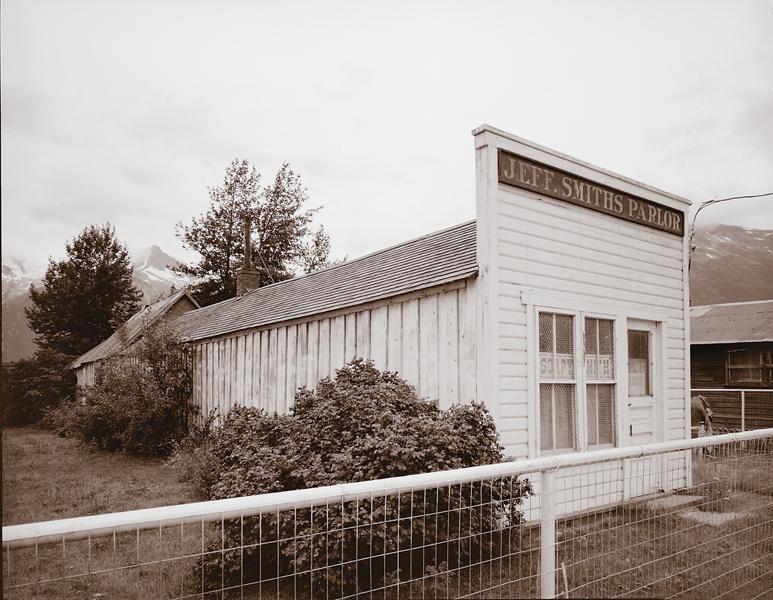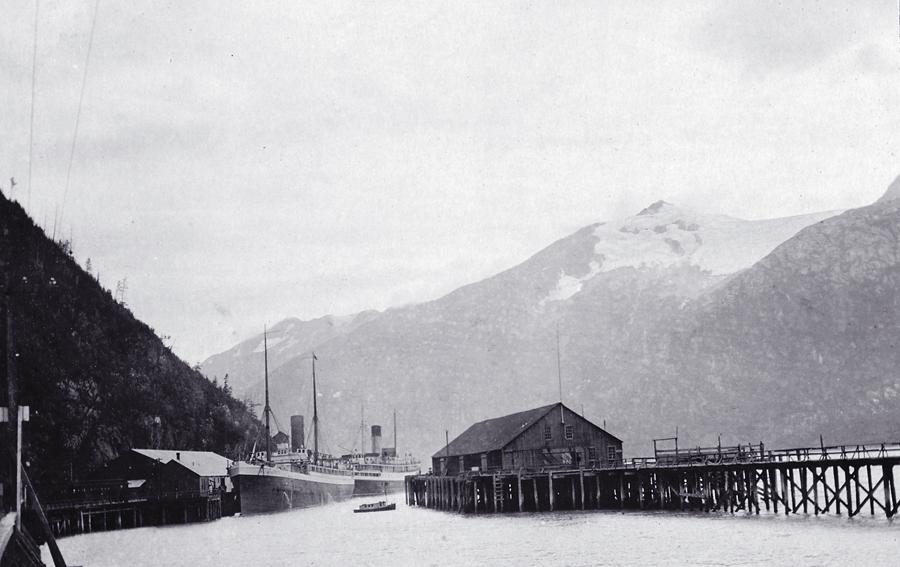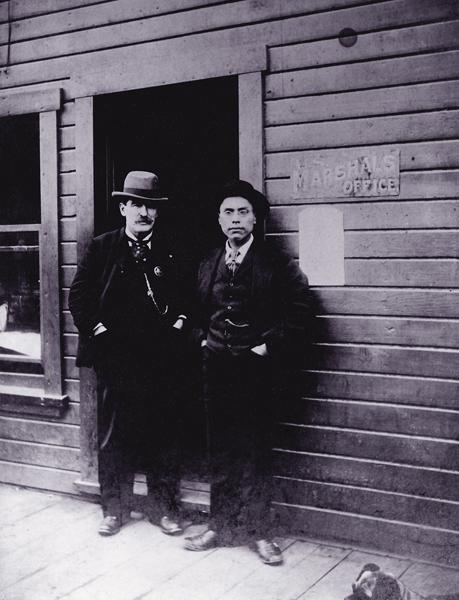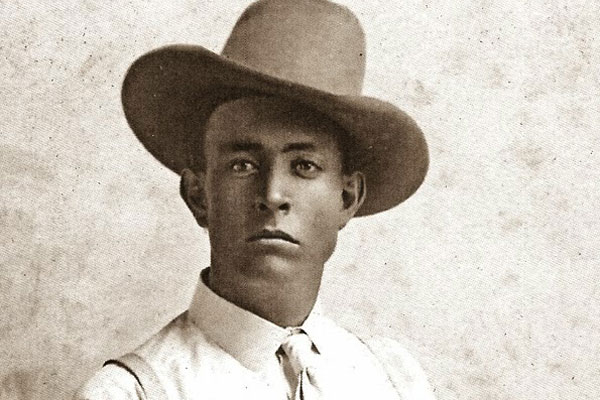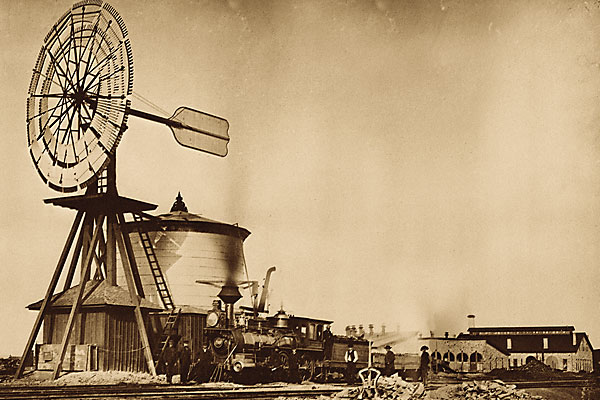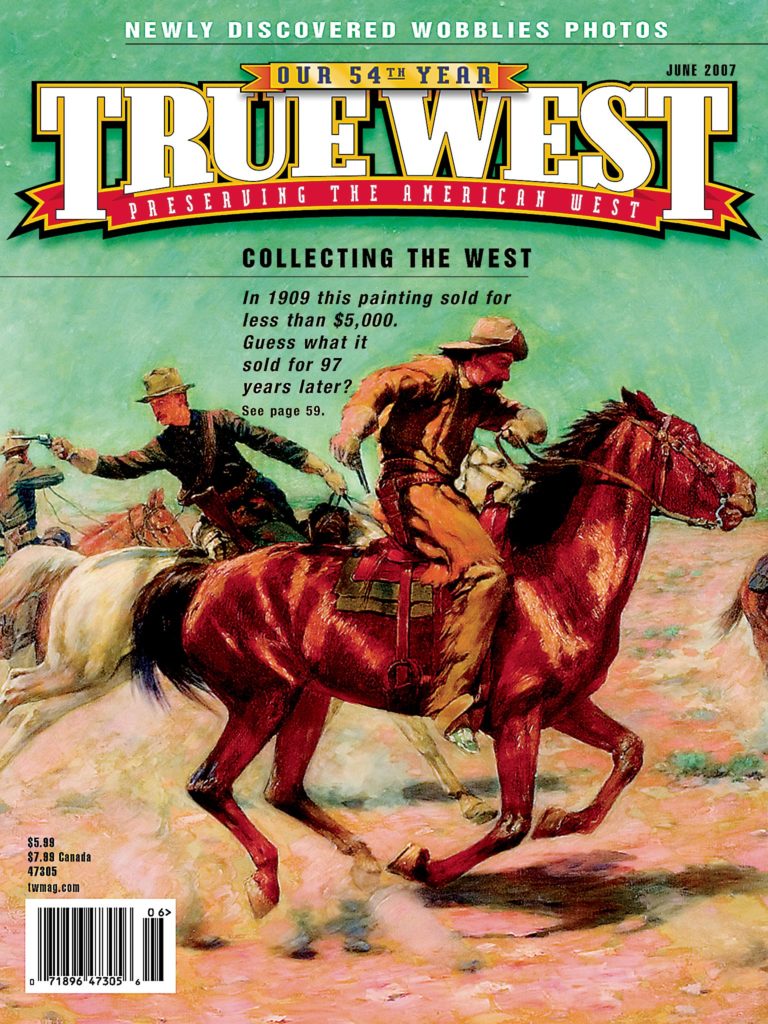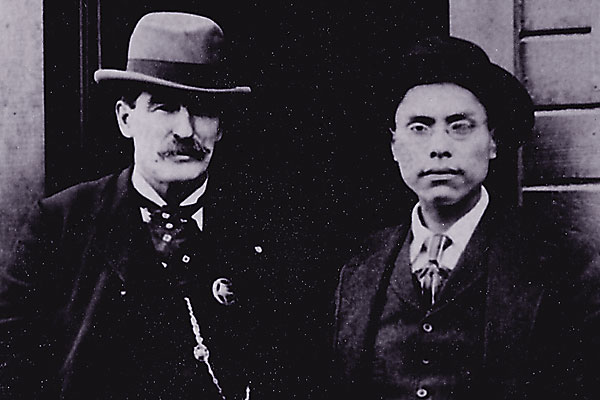
Standing over six feet tall, the broad shouldered Josias M. “Si” Tanner stepped up to Jefferson Randolph “Soapy” Smith on the night of July 8, 1898, to ask him and his companions to turn around and leave the Juneau Company Wharf in Skagway, Alaska.
Flanked by Frank Reid and Jesse Murphy, Si had volunteered to guard the approach to the wharf, where a group of more than a hundred outraged citizens met to deal with the con man’s latest crime, the theft of gold miner J.D. Stewart’s poke. Si later told his family that when one of Soapy’s henchman stuck the barrel of the gun under his nose, he thought it looked as big as a stove pipe. Calmly doing his job, Si simply stared the man down.
Trouble had been brewing for days. Tanner, Reid, Murphy and five others had gathered in front of the Manila Saloon at the corner of Sixth and State on the Fourth of July, watching Soapy lead the parade on his big, white horse. Si, lounging in a chair he’d borrowed from Ed McDonald, the owner of the Manila, had pretended a nonchalance he didn’t feel, letting his ’92 Winchester rest against his thigh, ready to whip into action the moment it was needed.
Since then, Soapy had denied having anything to do with the theft of that gold poke in his Oyster Parlor Saloon. Soapy had been trying to run this town for months, and U.S. Deputy Marshal Sylvester S. Taylor only cooperated with the man, without doing his job by keeping him under control. The citizens of Skagway had had enough. Travelers were starting to avoid their town because of Soapy and his gang, going through sister city Dyea and using the Chilkoot Trail to reach the Klondike gold fields instead of Skagway and the White Pass.
Soapy earned his sobriquet in the early 1890s on the streets of Leadville, Colorado, where he’d wrap a bar of soap with a $5 bill, then cover it with plain, white paper. As one of his confederates paid a buck at a chance to guess which wrapped bar contained the $5 bill, Soapy charmed the crowd with promises of riches. Sure enough, his assistant always picked up the sought-after bar of soap. Smith brought his bag of tricks and a league of con men with him when he came to Skagway with the Klondike gold rush in the winter of 1897-98.
As the good men of Skagway met in the warehouse on his brother-in-law Emery Valentine’s wharf on July 8, 1898, Si stared down the man who had occasioned the meeting. With a dozen henchmen at his back and holding a Winchester rifle, Soapy didn’t seem a bit concerned about being confronted by three apparently unarmed vigilantes. The con man ordered Frank, the man who confronted him directly, aside. Frank drew a pistol from his pocket. Shots rang out. Soapy’s gang vanished off the wharf. Si rolled Soapy’s prone body over to find a gaping hole in his side and sightless eyes staring up at him.
He turned to Frank.
“I’m hurt bad, Cap,” Frank told him, clutching a stream of blood to his belly. It took Frank Reid 10 days to die.
Si, a natural leader, calm and collected in chaotic situations, took over. After sending for Dr. Fenton B. Whiting to attend to the fallen Frank, he gathered up 30 men and began to scour the town for Soapy’s confederates. They rousted out the saloons, gambling dens and brothels, where they found 26 of Soapy’s gang members. Si brought out one gangster hiding under his bed despite the protests of a sobbing wife and two little girls. Soapy’s mistress tried unsuccessfully to flee on a southbound steamer. Si sent W.J. Rogers into the Board of Trade Restaurant to roust out one of the worst of the gang, “Old Man Tripp,” an arch criminal from the days when Soapy had bilked the miners in Leadville. Tripp chewed on a tough steak and demanded he be allowed to finish it, sure he’d be strung up on a gallows, not to breathe another day.
Within 48 hours, U.S. Commissioner Charles Sehlbrede had removed Taylor from his job as U.S. deputy marshal and appointed Si in his place. Si’s assistants, under his able leadership, had rounded up three of the most dangerous of Soapy’s gang: Tripp, who had been his bartender and gunman, a man named Bowers and “Slim Jim” Foster, a dangerous hophead high on opium. J.D. Stewart, the man whose gold poke had been taken, declared these three men to be the culprits.
Having secured the accused in the garret of the Hotel Burkhart at Fifth and Broadway, Si stood at the foot of the stairs calmly holding off a mob of more than 100 outraged citizens bent on lynching the three ringleaders. The Skaguay News reported on July 9 that “Marshal J.M. Tanner has shown in every act since Friday night that he is the right man for the place, but never were his honest convictions more ably defended by his true courage than Sunday night when for nearly an hour he valiantly labored with the enraged crowd for the protection of his prisoners in the name of the law.”
Despite Si’s able defense of the garret room, several vigilantes, with ropes in their hands, did breach the door that held the prisoners. “Slim Jim” Foster, fearing for his life, jumped from the second story window of the hotel to the alley below. Si calmly walked down the stairs through the mob, his tall stature and broad shoulders without a doubt giving him an advantage. With bullets flying over the crowd, Foster fled up the alley. Si met him at the corner of State and Fifth, a block and a half away. Again, Si talked the horde into letting the law take care of the men instead of stringing them up by the neck.
Twenty-four hours later, the calm lawman had rounded up six more of Soapy’s henchmen and shipped them all to the Alaskan territorial court in Sitka, lest the vigilantes take further vengeance on the gang. Si’s job had just begun.
“Youngest Old Man”
Si was born to Francis C. Tanner and his wife Phebe A. Martin on February 22, 1850, in West Bloomfield, Michigan, the second oldest of four children. In 1871, he married Juliette Valentine in Central City, Colorado, where he’d gone as a young man to mine gold. Si practiced justice in Harrison County, Iowa, where he raised racing horses, and again in Pierce County, Washington, as a sheriff in the 1880s and 1890s. He had hung up his guns in 1895 when he managed his brother-in-law Emery Valentine’s general store in Juneau, Alaska.
Then the news of the July 1897 Klondike gold rush reached him. With the first wave of stampeders, Si went to Skagway, not unlike Soapy, to take advantage of the business opportunities created by the stampede to the far north. Si took horses, a barge and an old steamship to the boomtown and began lightering goods from the ships to shore, thus earning himself the sobriquet “Captain.”
After capturing Soapy’s gang, Si remained U.S. deputy marshal for three years, representing the only law for 100 miles along the American-Canadian border. When Skagway incorporated in June 1901, Si ran for city magistrate and became the town’s judge. He held that position for the next eight years, winning re-election regardless of the ebb and tide of local politics. During that entire time, he operated a bicycle, plumbing and hardware store in a building he had once rented out as the Reception Saloon.
Then, in 1909, his supporters convinced him to stop interpreting the law and start making it. He ran for city council and won one of seven seats in City Hall. The next year, his constituency elected him mayor, a position he held for three consecutive years, a record for Skagway up until that time. When Alaska held its first Territorial Legislature in 1913, Josias M. Tanner was the senator from Southeast Alaska, representing Skagway and Juneau, the territorial capital.
A staunch Democrat, Si gracefully ceded his second re-election to that seat in 1916 when Republicans took over local politics in Juneau. But he couldn’t stay away from the law. The governor of Alaska asked Si to become Southeast Alaska’s U.S. marshal. Democratic President Woodrow Wilson, when asked to confirm Si’s appointment, at first expressed reluctance to do so due to Si’s advanced age of 67. He was told that “Marshal Tanner is the youngest old man you will ever see.” Just to show how fit a man he remained, Si was still playing shortstop in the annual Alaska British-Columbia Yukon baseball championships in Skagway and saw no reason to quit, baseball remaining a passion of his until he died. Confirmed as U.S. marshal, Si served the Southeast until the Republican administration of Warren Harding in 1921.
He retired to his hardware store in Skagway, finally content to compare stories of the gold rush days of ’98 with the other old-timers. On September 20, 1927, Si ate dinner with his son Fred and his daughter-in-law Frances. They all sat down for a game of cards afterwards. He enjoyed that game, like he always did with the family. He went to bed, 78 years old, still strong, still rock solid, still a man of law and justice. He died of a heart attack an hour later.
Did Reid Kill Soapy?
One question still haunts the legend tellers of Skagway. The caliber of the bullet found in Soapy’s body on July 8, 1898, didn’t match that of Frank Reid’s pistol. Although Frank is hailed as Soapy Smith’s killer, the angle of the bullet’s entry came from the right, not straight ahead, where Frank stood. Si and Frank helped organize the Committee of 101, the vigilante group that harassed Soapy and ultimately drove his gang from Skagway. Si stood not far from Frank when the fatal bullet was fired.
Reid fans—even the Tanner family—say Si was unarmed. Was he? A man who owned a Winchester and volunteered to guard the wharf against a gang of cutthroats? The town needed a martyr in Frank, not a living murderer who could face an inquisition. They also needed a man who could take over and clean up their town for them, not someone awaiting a prosecutor’s questions, the target of a gang’s vengeance. Unless someone has the bullet that killed Soapy, we’ll never really know who fired the fatal shot. And this author suspects that Si would never have told a soul.
Photo Gallery
– Courtesy Library of Congress –
– True West Archives –
– Courtesy Library of Congress –
– Courtesy Alaska State Library –


